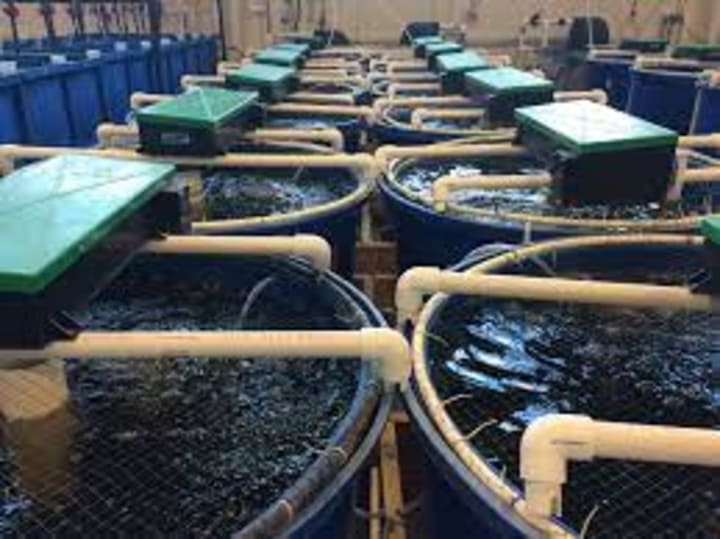TIPS AND TRICKS IN AQUA CULTURE
AQUA CULTURE

Aquaculture, also known as fish farming, is the practice of cultivating aquatic animals such as fish, crustaceans, mollusks, and aquatic plants for food, recreation, and conservation purposes. It has been rapidly gaining popularity in recent years as a way to meet the increasing demand for seafood while reducing the impact on wild fish populations. However, successful aquaculture requires careful planning and execution. In this article, we will discuss some tips and tricks for successful aquaculture.

- Choose the right species
The first and most important step in successful aquaculture is choosing the right species to cultivate. Factors to consider include the species’ tolerance for environmental conditions, growth rate, disease resistance, and market demand. Some of the most commonly farmed species include tilapia, salmon, trout, and shrimp.
- Pay attention to water quality
Water quality is a critical factor in aquaculture. Fish and other aquatic animals require clean water with the right levels of oxygen, pH, and nutrients to survive and grow. To maintain optimal water quality, it is important to regularly monitor water parameters and make adjustments as needed. This may include adding oxygen or removing waste products such as ammonia.
- Provide adequate nutrition

Proper nutrition is essential for the growth and health of aquatic animals. Depending on the species being farmed, the diet may consist of commercial feed or live food such as plankton or brine shrimp. It is important to provide a balanced diet that meets the nutritional needs of the animals at each stage of their development.
- Manage stocking density
Stocking density, or the number of animals per unit of water volume, is another important factor in aquaculture. Overcrowding can lead to poor water quality, increased disease susceptibility, and reduced growth rates. On the other hand, understocking can result in inefficient use of resources and reduced profitability. Finding the right balance requires careful monitoring and adjustment based on the size and growth rate of the animals.
- Control disease
Disease can be a major problem in aquaculture, especially in crowded conditions. To prevent and control disease outbreaks, it is important to maintain good water quality, practice good hygiene and biosecurity measures, and monitor the animals for signs of disease. In some cases, vaccines or medications may be necessary to treat or prevent disease.
- Use proper equipment
using proper equipment is essential for successful aqua culture. This includes tank filters pumps and other devices that help to maintain water quality and provide a healthy environment to the animals.
- Consider recirculating systems

Recirculating aquaculture systems (RAS) are a growing trend in aquaculture that offer several advantages over traditional open systems. RAS use advanced filtration and water treatment technologies to recycle and reuse water, reducing the need for large volumes of fresh water and minimizing the discharge of waste products. This can lead to increased efficiency, reduced environmental impact, and improved disease control.
- Monitor environmental impacts
Aquaculture can have both positive and negative environmental impacts. It is important to monitor and minimize these impacts to ensure sustainable and responsible production. This may involve using low-impact farming practices, reducing energy use and greenhouse gas emissions, and minimizing waste and nutrient runoff.
- Seek advice and support

Finally, it is important to seek advice and support from experienced aquaculture professionals, industry groups, and government agencies. These resources can provide valuable guidance on best practices, regulations, and market trends. Networking with other aquaculture producers can also be helpful for sharing information and learning from each other’s experiences.
In conclusion, successful aquaculture requires careful planning, management, and execution. By choosing the right species, maintaining good water quality, providing adequate nutrition, managing stocking density, controlling disease, considering recirculating systems, monitoring environmental impacts, and seeking advice and support, aquaculture producers can achieve sustainable and profitable production while minimizing their impact on the environment
About the Creator
TIPS AND TRICKS
Welcome to my page..we are thrilled that you have taken the time to visit us today....It's all about life hacks, tips and tricks. once again welcome to the unknown worldworld






Comments
There are no comments for this story
Be the first to respond and start the conversation.